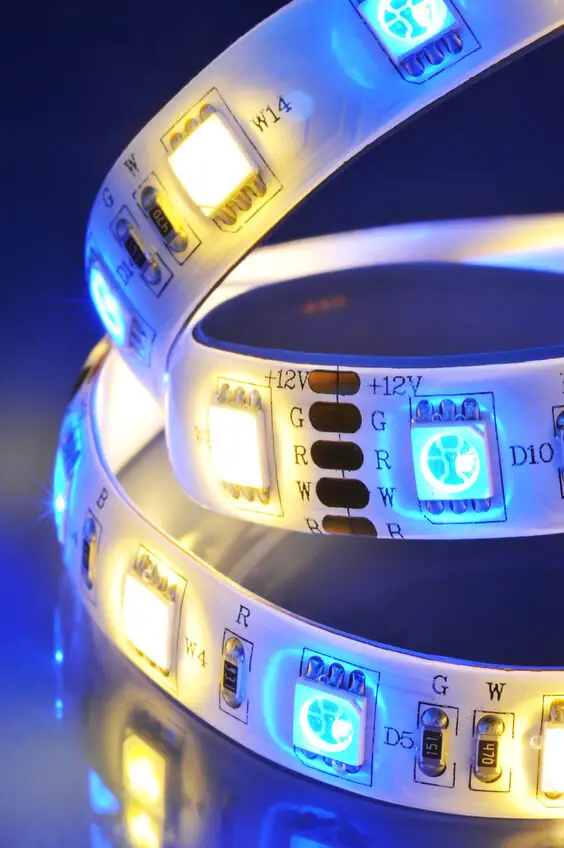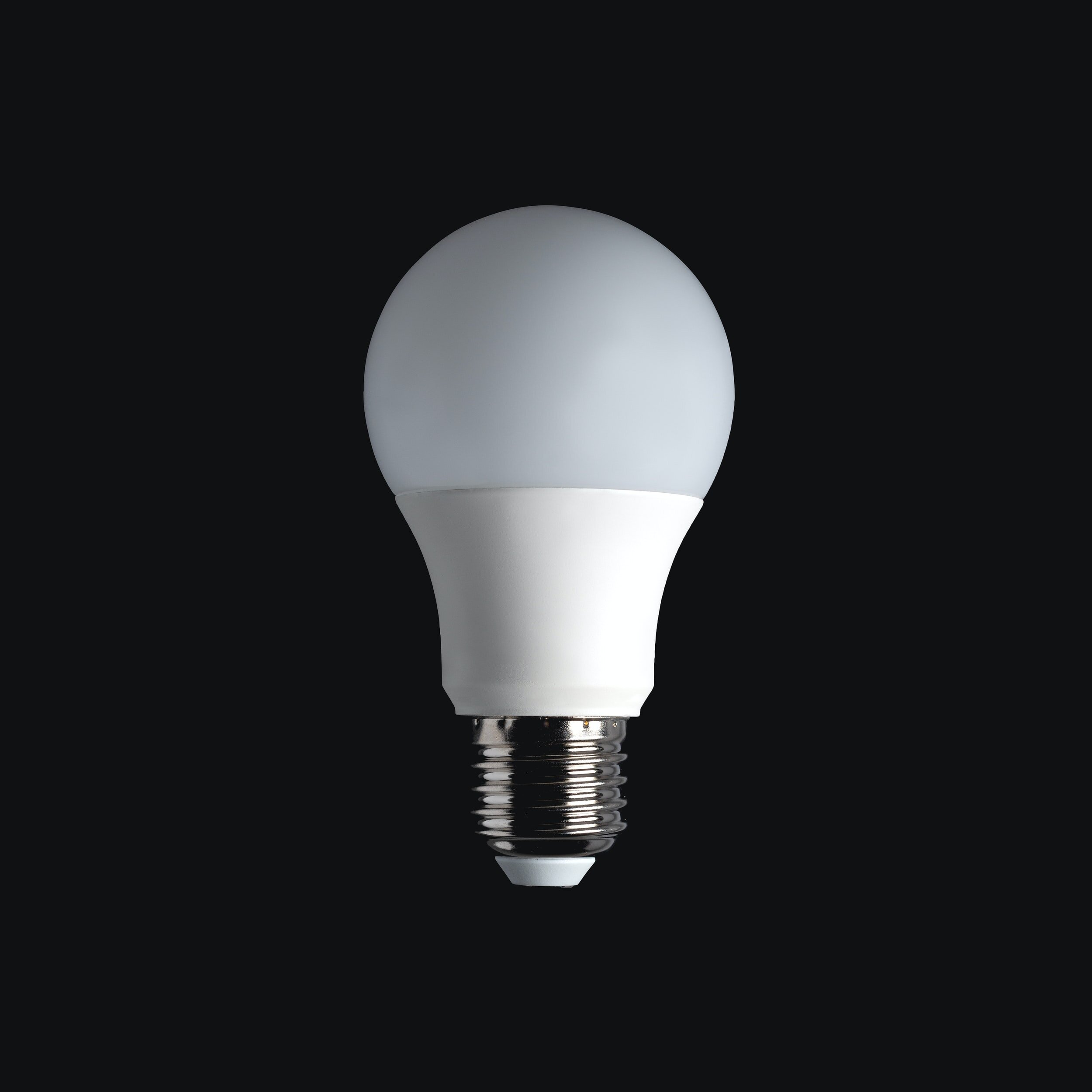How LED Light Bulbs Work – A Detailed Explanation
As time goes on and technology advances we are often encouraged to invest in buying LED lighting, particularly LED light bulbs for homes. But how do LED bulbs actually work in comparison to the bulbs we currently have?
LED light bulbs work by assembling small light-emitting diodes into the normal bulb shapes we are used to. This works by having a built-in voltage driver at the base of the LED bulb, which is required due to how the LED technology is normally not built to handle the regular voltage present in power outlets.
This is a very broad explanation of it since all these bulbs really are is just LED chips put into bulb shapes. However, here we are going to dive deeper into how LEDs actually work and how they are integrated into a bulb shape.
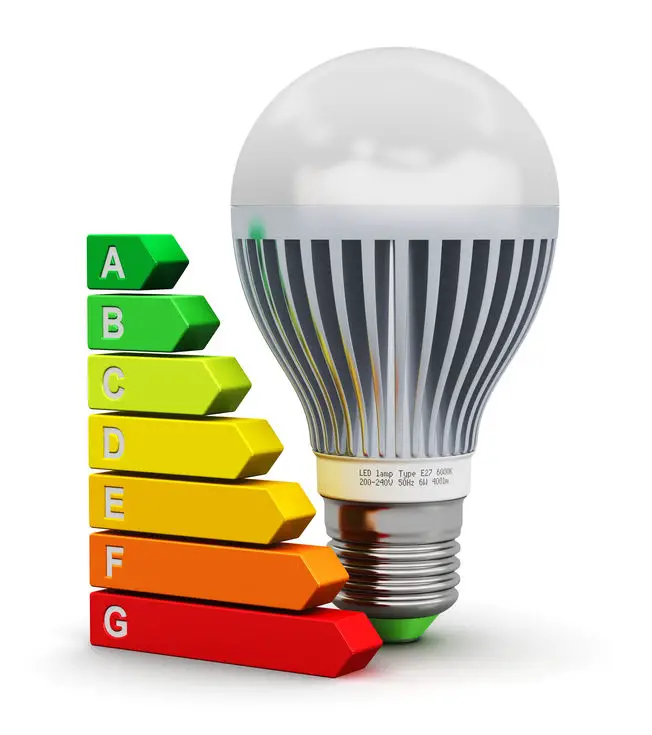
Contents
The LED Technology
In this segment, we will overview the LED technology as a whole but particularly the parts that are relevant to how LEDs are integrated into these bulbs.
How LEDs Work
Firstly we will look at how LEDs actually work in the first place. LEDs function based on a property called “electroluminescence“, which essentially means that they generate light based on an electrical current passing through a material.
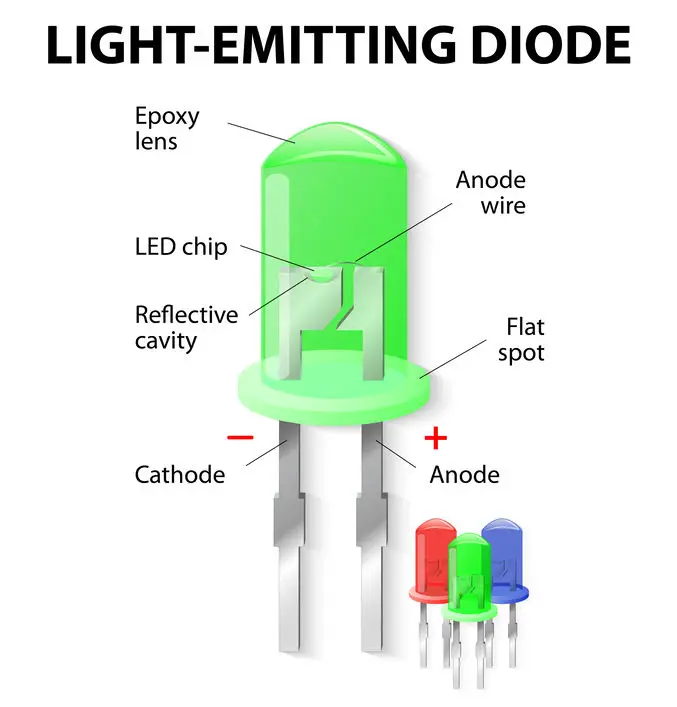
While this happens with every light bulb to a degree, it is far different from incandescent or halogen bulbs. While all the bulbs mentioned generate their light through “an electrical current passing through a material“ there is still a distinct difference in how this light is generated.
This is because in LEDs it is the material itself that generates photons (light particles) whereas in incandescent bulbs photons are generated from heating up material to the point where it glows, which then emits light.
As for incandescent bulbs, the material that’s being heated up to generate light is a tungsten filament whereas in an LED the material of choice are semiconductors such as gallium arsenide (GaAs) and different forms of silicone.
This is the reason why LEDs are so much more energy-efficient than incandescent bulbs, they simply lose a lot less energy to thermal radiation.
Driver Requirements
Another important aspect of LEDs is the fact that they require a driver to work. A driver is essentially a part of the electrical circuit that transforms the incoming electrical current into a current the LED can handle.
It is required because LEDs run on a DC current whereas the power present in the bulb sockets is AC. This means that in order for an LED to function straight out of the socket it needs to utilize some sort of transformer which converts the 120-240V AC current (depending on the region) into a more manageable 30-60V DC.
Heat Dissipation
One more important aspect of LEDs is that they require some sort of system for heat management. This is because when LEDs overheat beyond their prescribed temperatures their lifespan will shorten significantly and their emitted light quality might decrease too.
While LEDs produce far less heat than incandescent bulbs they still produce a fair amount of heat during their use. Generally speaking, LEDs reach temperatures of around 60°C-100°C (140°F-212°F) in the light-producing “junction”. This can depend on a lot of things, mainly how much you load them but also the ambient temperatures of where it is installed.
One common way to deal with this is to make use of a heatsink. A heatsink works in a rather simple way. It works by having a thermally conductive material (usually aluminum) attached to the junction and leading the heat away to the surrounding air.
How LEDs Are Integrated Into Light Bulbs
Now that we have had an overview of what an LED is and how they function we can look at how this function is integrated into light bulbs. Normally, LEDs are simply used for smaller applications such as small electronic indicators or put throughout an LED strip.
So how is it exactly that the LED technology has been worked out to fit inside lightbulbs in such a way that they can be inserted into a regular socket and still work? We will now take a look at how that is possible, but first, we must differentiate between a few sorts of LED bulbs.
The different LEDs we’re referring to here mainly is regular LED bulbs and retrofit LED bulbs. The main reason these are different is that the placements of the actual diodes are quite different and therefore work differently as well.
LED Bulbs
First out of these bulbs is the most basic form of LED bulbs. These bulbs are exactly the ones that come to mind when thinking of “LED bulbs“, they are commonly a tiny bit larger than regular bulbs and usually have a frosted lens where the glass typically would be.
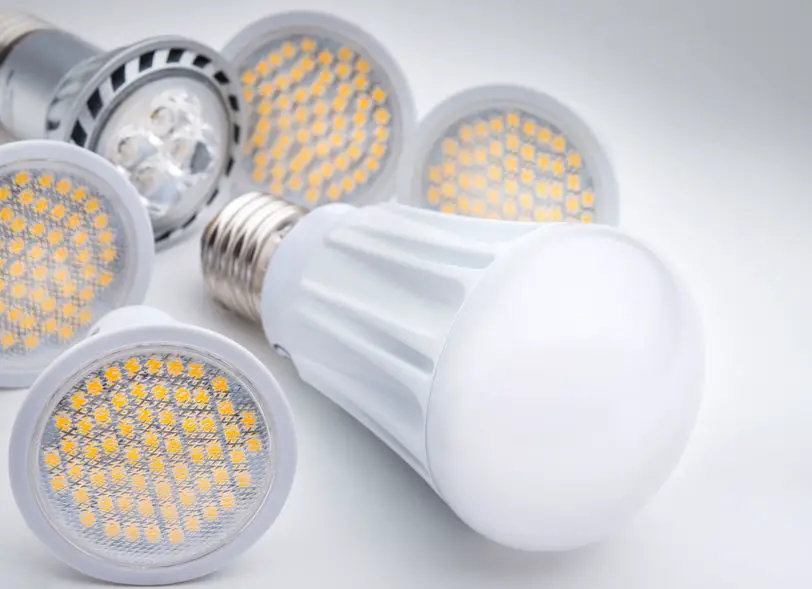
The way these bulbs work is quite simple. They produce light by placing a varying amount of LED diodes along the bottom of the base of the lens, which is all easily identifiable since every single LED chip is one tiny yellow spot in the bulb.
These LEDs are all connected in a series and all help to produce an even light output throughout the bulb. The lens also helps with this as it causes the light to be spread evenly.
As mentioned previously, LEDs can’t be plugged into regular home voltage unless they have some sort of transformer. But where exactly is the transformer in these bulbs?
The driver is built into the base of the bulb, meaning that it can be directly placed into the socket and still function properly since the electrical issues previously mentioned get solved with the presence of a driver. This applies to not only this bulb but also all the other types of LED bulbs coming up.
Retrofit LED Bulbs
Retrofit LED bulbs are rather interesting in comparison to regular bulbs. This is because they are designed to closely resemble the look and feel of old incandescent bulbs.
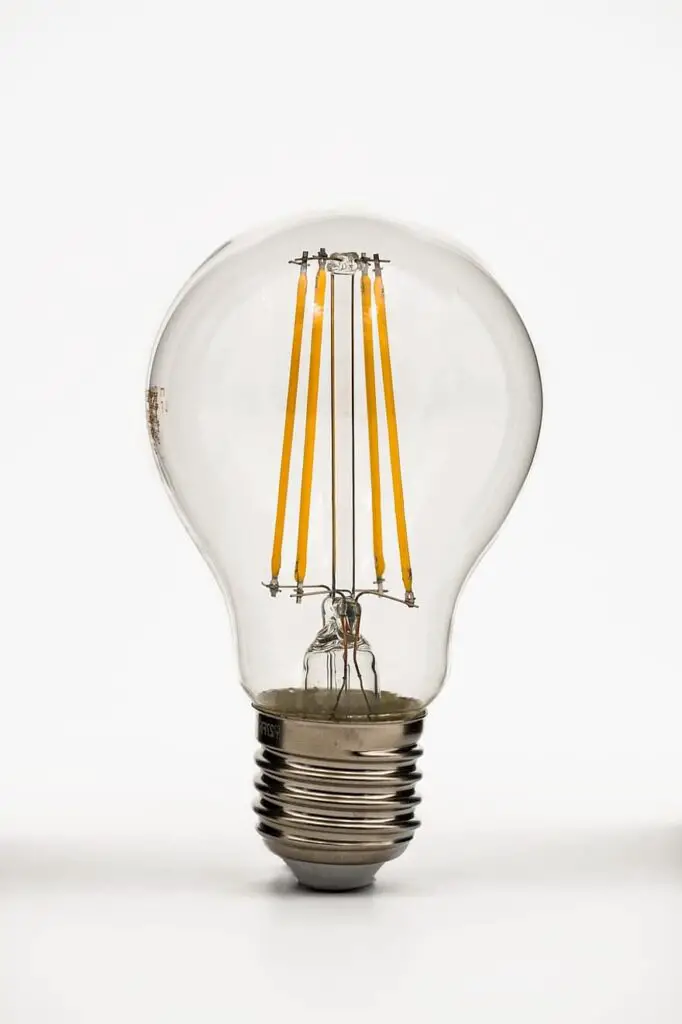
They achieve this goal very well as they manage to keep the entire exterior the same and only changing the look of the inside to accommodate for proper illumination with LEDs.
It is also therefore very easy to tell an LED bulb apart from any other bulb since the LED variant has visible streaks of phosphor coating running across the light-producing diodes.
The way these bulbs work is very similar to regular bulbs. The concept of LEDs doesn’t exactly change, rather the execution of fitting into a bulb shape does.
These bulbs manage it by mounting the LEDs vertically instead of horizontally and pointing them in all directions, meaning that they will give a relatively even light output from every angle of the bulb.
Otherwise, these bulbs are virtually the same, since the only thing that has changed is the look of the exterior and the placement of diodes.
RGB LED Bulbs
Next up we have RGB bulbs. These bulbs are built similar to regular LED bulbs but have some additions to their construction to facilitate the extra colour functions.
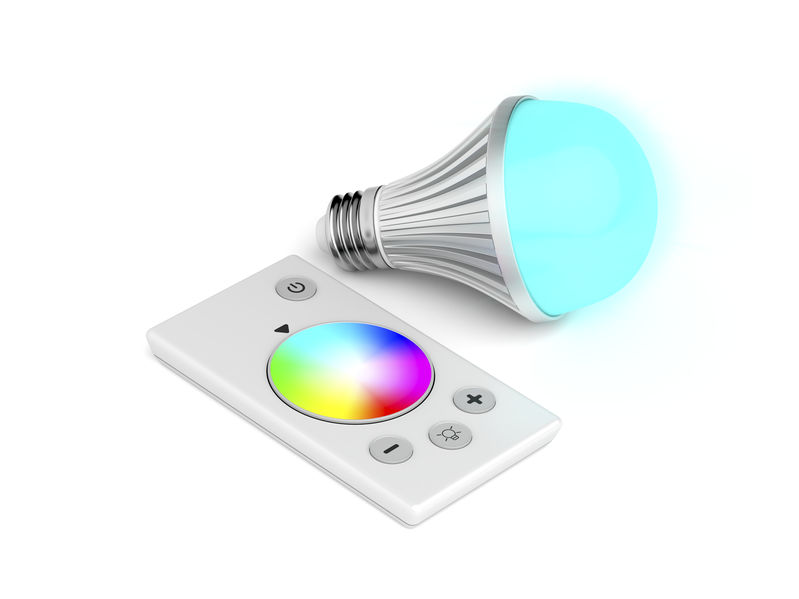
The first thing to address about RGB bulbs is that the actual LED chips are a bit different. Instead of having chips that purely emit white light they instead have chips with 3 different colours integrated into all of them, these colours being red, green and blue (RGB).
This is what allows the RGB colouring function to actually work. When a colour is selected from the remote/mobile app it will simply adjust the light output from each individual colour until the desired output is acquired.
This means that these bulbs not only have a transformer in the base of the bulb but also some form of a signal receiver, which allows it to take instructions without having to do anything manually.
Tunable White LED Bulbs
Lastly, we have tunable white LED bulbs. These bulbs look a lot like basic LED bulbs, except that they have the extra functionality of being tunable white.
Tunable white refers to the ability of the light bulb being able to change its colour temperature (K). This is not normally required in most systems, but there are instances in which this function is desired.
This is done by having 2 sets of LEDs present, one warm and one cool set. This means that we can switch between warm and cool by dimming the sets accordingly to the output desired. While this is the main concept you can go here for a more detailed explanation of the tunable white functionality.
Summary
The way LED bulbs work is different from that of older bulbs but is still relatively simple. All kinds of LED bulbs have a transformer in the base of them and a varying array of diodes in the top of the bulb depending on the bulb.

